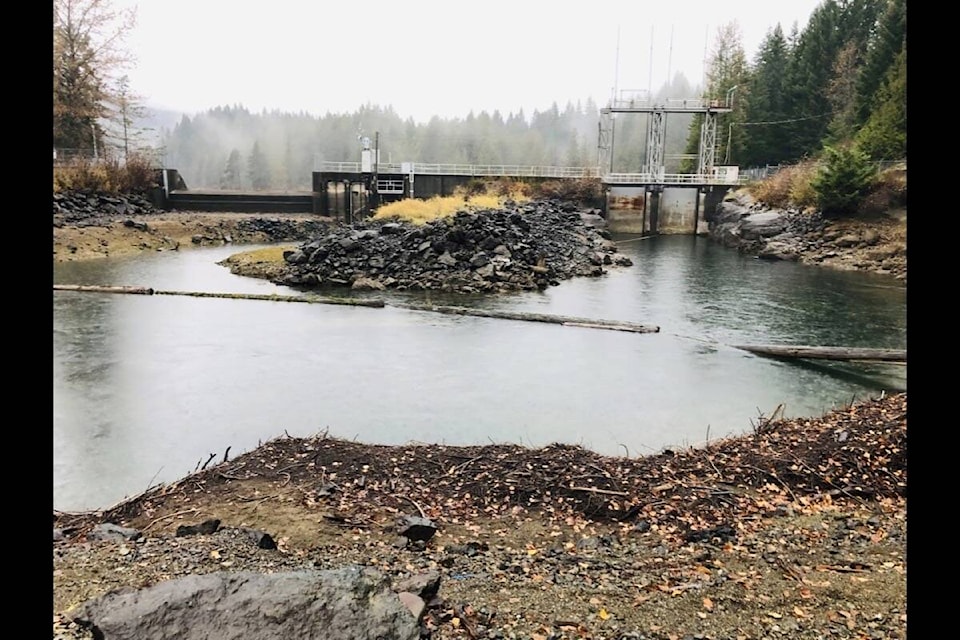The unprecedented delay in fall rains has been challenging as BC Hydro tries to manage the system for fish habitat and spawning salmon. While water levels are low on the Puntledge River system along with other Vancouver Island hydroelectric watersheds, we are fortunate to have an integrated provincial system and the supply of power is not an issue. Our large hydroelectric systems are in good shape.
The precipitation since July has been very low. In August and September, total precipitation in the upper watershed was 21 and 16 per cent of normal, respectively. In October the precipitation amount was 41 per cent, and for November to date, just 23 per cent. November is normally the wettest month of the year, with about 375 mm of precipitation on average. We’re sitting at about 60 mm. The forecast is for small to moderate storms this week and then turning cold and dry again next week. The low water inflows will continue for the near-term. The water inflow into the reservoir Monday was about eight cubic metres per second (m3/s) though this may increase to about 35 m3/s later this week before declining again.
With about four months of very dry conditions it’s culminating in very low water run-off into the Comox Lake Reservoir. For the Oct. 1 to Nov. 21 period, the inflows are just 24 per cent of normal and the lowest we’ve seen for this time of year in 55 years of record.
The reservoir is considered full at about 135.3 metres. When it reaches 131 metres and particularly 130.8 metres, Hydro is concerned about how much water may pass down to the Comox Dam from the lake. The dam is about 300 metres downstream from the lake outlet. The reservoir level hit a low of 130.98 metres on Oct. 27 and then rose about 40 centimetres from storm activity, and provided the ability to increase river flows slightly to try to help spawning salmon. With the unprecedented delay in the fall rains, the reservoir level has moved back down to 131 metres and may stay around that level for the near-term, though with some increase this week.
Hydro was running the powerhouse at full capacity or 33 m3/s to July 17 given the good water supply at the time. Seeing a drying trend develop and for a typical summer operation, Hydro moved discharge from the dam downward a few times to 18 m3/s on July 29. Over the summer and fall, Hydro moved the river flow to as low as seven m3/s before slowly moving up to 14.5 m3/s on Nov. 9. This was done with a modest increase in water inflows from small storms and to benefit spawning salmon. The Puntledge minimum fish habitat flow below the powerhouse is 15.6 (m3/s). On Wednesday, Hydro will reduce the flow to about 11.5 m3/s given how low the reservoir level is and the need for more reservoir water storage.
The 11.5 m3/s flow rate will be the lowest Puntledge flow rate on record for this time of year. 1993 was the only other year where Hydro was below the 15.6 m3/s flow rate at this time of year.
BC Hydro will increase the river flow once the water storage conditions improve.
In 2021, Hydro was spilling water for flood risk management for about four weeks to mid-November. It’s the complete opposite situation this year with the remarkably dry fall weather. Operations will be adjusted as needed. BC Hydro operates the hydroelectric facilities taking into account the weather forecast and historical water inflow records, with modelling updated each weekday.
